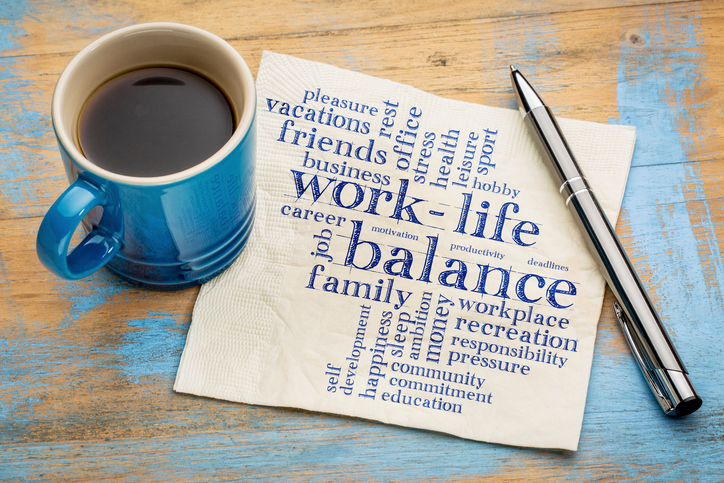Leading a good life is often like looking at grass—it’s always greener on the other side. We see the life other people lead and think to ourselves, “That should be me.”
If we suffer from a serious ailment or experience a traumatic loss, it’s only human to wish the situation was different. Good mental health dictates that we strive to be as happy and healthy as possible in whatever our situation.
But, there is so much emphasis on being happy in our culture that we forget happiness is not one thing. Indeed, happiness is many things and there is a small chance that you’ll knock the ball out of the court on every one of them.
We can blame the 1960’s for the trend that encouraged people to reach out and find their true potential. And in the process, throw in a little of how to discover the meaning of life. Deep stuff, except that many people put a bandaid on what it means to live a good life—they slapped on a Get Happy label and hoped for the best.
In a 42-year study conducted by the University of Chicago, it appears that happiness in the United States peaked in 1973. Otherwise, happiness has stayed stagnant for over the past 42 years. The bandaid is clearly not working, so what would a deep healing look like?
The first place to start is to look at what contributes to how we lead a good life:
Tip #1 Maybe You Weren’t Meant To Have It All
Below is a list of different areas that impact your ability to lead a good life:
- Family
- Career
- Health
- Financial
- Education
- Travel
- Romance
- Relationships
- Spiritual
Each of these areas presents different types of happiness and contentment. You may be able to live a good life in a few of them, but not all. Areas like career and marriage take time and commitment. Both require work so that may mean you have less time to develop relationships or travel.
Time restrictions necessarily place limitations on what you can do. Often, living a good life means you’ve made a decision to put more time into one area over another.
What It Means For You: Living a good life isn’t about just one thing. It is the combination of many. Furthermore, it means you must prioritize what is most important to you. Once you have clarity on what is most important to you, it is possible to put your energy into activities that support those areas.
TIP #2 Work On Being Agile, Not Strong
You can survive, thrive, and be an incredible leader if you remain flexible when times are tough and outcomes are not clear. Mental toughness does not mean blasting through your obstacles and roadblocks.
The key is to develop a flexible and agile way of thinking about how to live the good life. Awareness of these mental shifts allows you to recognize where you’ve been touched by emotions like happiness and not give up when it slips away.
Researchers have uncovered what they call the Hedonistic Treadmill. We work very hard to achieve a goal that will help us lead a good life. We are filled with anticipation until we experience the brief fix that produces happiness, but the euphoria doesn’t last long. When it dissipates, we revert back to our baseline and start chasing the next dream.
This is not a bad thing, however. Dissatisfaction with the present is what keeps us motivated to move forward. Perpetual bliss would lead to complacency; and complacency is the real killer.
Lao Tzu once said, “Water is fluid, soft, and yielding. But water will wear away rock, which is rigid and cannot yield. As a rule, whatever is fluid, soft, and yielding will overcome whatever is rigid and hard. This is another paradox: what is soft is strong.”
How To Make It Work For You: Mental toughness requires the resilience to cope with the harsh realities of life without ever losing sight of the road. If you focus only on your barriers, you’ll never see the road that leads to the good life.
Tip #3 Rosy Images Of The Good Life Are Usually Misleading
Face it—rosy images of how life will be in the future are meant to enhance advertisement revenues, not enlighten your understanding of real life. It’s hard not to be seduced by images of attractive people surrounded by beautiful surroundings where everyone is happy and smiling.
Slick ads are very effective tools of persuasion. We can feel ourselves in those rosy images of how the good life will look—once we get there. As a result, we live in the future where we see ourselves in the midst of those surroundings.
We can blame our brains, though. Neuroscience tells us that we have an optimism bias, which is the tendency to believe our future will be better than our present. At the subconscious level, the mind has a tendency to focus on the optimistic; while at the conscious level, it has a tendency to focus on the negative.
Along with the optimistic bias, our brains also have what is called a Pollyanna Principle. It means that we tend filter out unpleasant information from our past and retain only pleasant memories.
What It Means For You: Since the conscious mind tends to focus on the negative, say to yourself, “Isn’t this great, right now?” Stop living in either the past or the future. Focus on what is going on in your life right now, and enjoy the areas you have made a priority.
© 2017 LaRae Quy. All rights reserved.
You can follow me on Twitter, Facebook, Instagram, AND LinkedIn
Are you mentally tough? Here is my FREE Mental Toughness Assessment
Get my new book, “Secrets of a Strong Mind (second edition): How To Build Inner Strength To Overcome Life’s Obstacles”
Author of “Mental Toughness for Women Leaders: 52 Tips To Recognize and Utilize Your Greatest Strengths”





LaRae,
I’ve found that when I focus on the gaps, like those one or two areas where things are crappy, all of the good stuff fades into the background. Your suggestion that maybe we’re not meant to have it all rings true and is often overlooked. When I stop to consider each of those areas you list above on their own, I can feel what’s there without being blinded by what’s not in the overall picture. We all make choices, if we’re just floating along, hoping for the best in all of the areas of life that make us happy, that’s a choice too – just not a good one.
Thanks, LaRae!
Alli
Fantastic perspective in your post LaRae! I find that being able to flex when things aren’t going our way is so key to being happy. Just when everything seems to be going along well something inevitably happens and we are usually thrown off course. In those situations it is helpful to draw on our strengths and support systems to get us through. There is no perfect and there is no forever. Change is part of life.
Thanks LaRae!
A great article LaRae. Thank you for it.
Glad you liked it Robert…